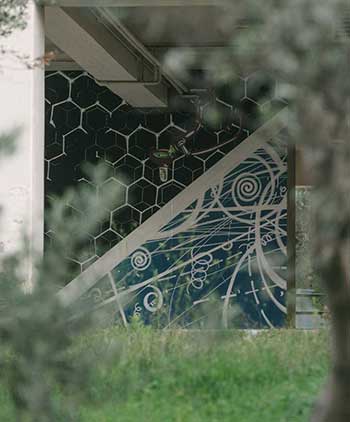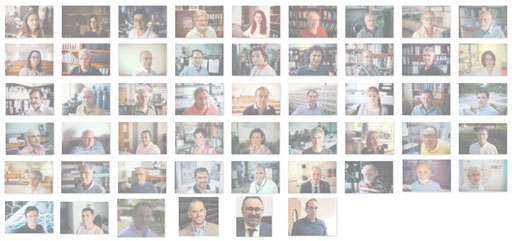- Τμήμα
Διοίκηση

- Προσωπικό
- Σπουδές
Σπουδές στο ΤΧΜ
Προπτυχιακά
Διπλωματικές Εργασίες
Μεταπτυχιακά
Διδακτορικό Δίπλωμα (PhD)
- Γενικές Πληροφορίες
- Νέες Αιτήσεις
- Κανονισμός
- Μαθήματα
- Προφορική Παρουσίαση
- Έρευνα
- Υποστήριξη Διατριβής
- Προηγούμενες Διατριβές
- Πρόγραμμα Εξετάσεων
Μεταπτυχιακό Πρόγραμμα (MSc)
Διατμηματικό ΠΜΣ (MSc)
- Φοιτητές
- Απόφοιτοι
- Έρευνα

Ερευνητική Δραστηριότητα στο ΤΧΜ
- Νέα & Εκδηλώσεις

Ανακοινώσεις
PhD Thesis Defence Presentations - Konstantinos Solon Papageorgiou Flampouras

Τίτλος Παρουσίασης (Presentation Title): Hydroxytyrosol extraction and purification from olive leaves with physicochemical processes
Presentation Type (Τύπος Παρουσίασης): Υποστήριξη Διδακτορικής Διατριβής
Ονοματεπώνυμο Ομιλητή (Speakers Full Name): Κωνσταντίνος Σόλων Παπαγεωργίου Φλάμπουρας
Προέλευση Ομιλητή (Speakers Affiliation): Chemical Engineering Department, University of Patras
Seminar Room (Αίθουσα): Βιβλιοθήκη "Αλκιβιάδης Χ. Παγιατάκης"
Ημερομηνία: Τετ, 02 Αυγ 2023,
Ώρα:
11:00 - 14:00
Διεύθυνση Διαδικτυακής Μετάδοσης: https://upatras-gr.zoom.us/j/95285154313?pwd=RWVGVzc5cGZ0elFWNzlBbjRVQmg2dz09
Περίληψη (Abstract)
Phenolics are substances that occur naturally in the metabolism of plants and are expressed in various components of them such as the leaves, tissues, flowers and fruit. Some of them are found to be especially beneficial for the human health mainly due to their antioxidant potential, and therefore have attracted a lot of attention. Some ways to acquire them is via chemical synthesis from appropriate precursors, via plant processing and extraction and finally from process wastes on already developed productions. One example is the isolation of antioxidant compounds from olive mill wastes such as the wastewaters from milling. These waters naturally contain polar antioxidants from the olive pulp and can be isolated before being discarded. Antioxidants from these wastes like tyrosol and hydroxytyrosol and their metabolites show great antioxidant capacity and show great market value even in low grades in purity. The present thesis is an attempt to isolate one compound from olive leaves, namely hydroxytyrosol, as much as possible with relatively simple physicochemical steps, that can be applied in the concept of an olive refinery. Olive leaves have not been studied extensively in terms of hydroxytyrosol isolation, since in olive leaves it resides in the form of oleuropein, a glycosylated secoiridoid. The process contains pretreatment steps for the olive leaves, to increase their available-to-solvent surface area, an extraction step for transportation of the compounds in a solution, a chemical step for hydrolysis of oleuropein, an extraction step with organic solvent for selective transfer of hydroxytyrosol in the hydrophobic phase and finally an evaporation step to remove the organic solvent. The process was tested in three scales. In the small scale, different parameters and conditions were varied to find suitable conditions with adequate yield of hydroxytyrosol. In the medium scale, the quantities and some process equipment were changed to serve the larger scale and also flat-sheet membranes of various types were used to determine their usefulness in the process and the right place to be incorporated. The third and last scale was semi-pilot and used large tanks and pilot-scale membranes for processing. These were performed to determine the hurdles and reasons for efficiency drop in the larger scale and therefore assist in modifying the process to better serve a simple and affordable scheme. The process that was developed managed high recoveries of hydroxytyrosol (> 40% in most cases) and membranes were found to increase purity but decrease the total yield. The pilot scale suffered from time delays during processing of large quantities with smaller scale equipment and this was detrimental to the concentrations of target compounds that are prone to oxidation. Recoveries in the pilot scale were much smaller than in the two smaller scales and this reflected the need for faster processing and minimizing delays between process steps. Furthermore, the procurement of olive leaves could be a serious issue due to the fact that olive leaves from olive oil mill piles contain only traces of these compounds and are probably destroyed due to exposure to heat, sun and moisture that accelerates oxidation processes. The only viable option for feedstock would be fresh olive leaves that are picked and dried immediately to maintain their phenolic profile or separation in the field after prunings. This reason makes it more viable as a standalone process rather than one incorporated in olive mills for waste management and extra profit.
Σύντομο Βιογραφικό Ομιλητή (Speakers Short CV)
Konstantinos Papageorgiou graduated from the Chemical Engineering Department, University of Patras where he completed his undergraduate thesis titled "Steam reforming of ethanol at low temperatures on Pt catalysts" under the supervision of Prof-Xenophon Verykios and Dr. Marios Kourtelesis. After his graduation he was admitted in the PhD program of the Chemical Engineering and Material Science Department, University of Minnesota where he worked on two projects for a short time. "Propane ODH on molybdenum carbide catalysts" under Prof. Aditya Bhan and "Hemicellulose pyrolysis kinetics" under Prof. Paul Dauenhauer. He returned to Patras after he completed the requirements for the M.S. to work with Prof. Christakis Paraskeva on Olive mill waste treatment processes and extraction of phenolics from these waste streams for the fulfillment of the requirements of the PhD program.



